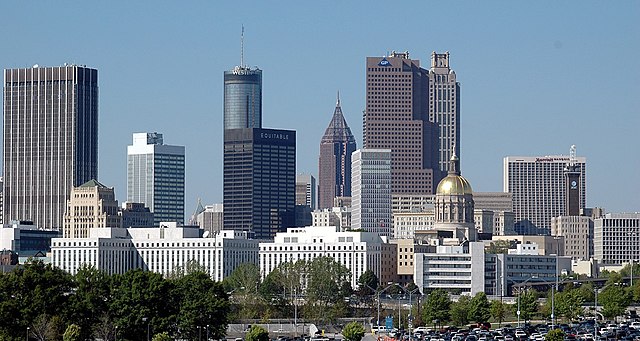The limits of growth without density

Metro Atlanta had a net negative migration last year:
Since the invention of air conditioning, Atlanta has known one constant: growth.
The region is finally cooling off.
Census data show more people from within the U.S. left metro Atlanta than moved to it during the 12 months that ended in mid-2024. It was a modest decline, about 1,330 people. But it heralds a significant moment for the longtime growth magnet: This is the first time metro Atlanta lost domestic migrants since the Census Bureau started detailing these numbers three decades ago.
There are other signs the city is losing its edge, including weak hiring among local employers and higher-than-average office vacancies. A 623-unit apartment complex in the city’s Buckhead neighborhood—a building once famous for an electronic sign that counted Atlanta’s expanding population—went into foreclosure last year.
Growth in some other big Sunbelt metros has slowed, too, after pandemic-fueled population surges, including around Phoenix and Tampa, Fla., the census data show. Recent Bank of America change-of-address data also show big metros in the region losing steam.
Surging housing costs and endless traffic are pushing people to choose smaller, cheaper cities instead, and this is starting to shift the balance of power in the southern U.S. These movers still include people who are leaving pricey northern cities, but also include people giving up on large southern metros like Atlanta.
As Krugman says, this shows that there are finally limits to growth that happens almost entirely because of sprawl rather than by good policies on infill housing and improved mass transit:
But its not just that New Yorkers are less likely to die in car crashes. New York and Atlanta drivers have almost exactly the same average commute time — 31 minutes. Again, how is that possible when New York has three times Atlanta’s population?
My answer is that New York makes far more extensive use than Atlanta of two cutting-edge transportation technologies. One of them is this thing called a “train,” sometimes running underground. The other is something called an “elevator,” which allows many people to live in multistory, multifamily apartment buildings.
Apartment living, in turn, permits New York to have much higher population density than Atlanta.
My preferred measure is “population-weighted density,” which asks how densely populated a neighborhood — strictly speaking a Census tract — the average person lives in. The Census calculated this measure after the 2010 Census, but unfortunately doesn’t seem to have continued the practice or even maintained the data on its website. But I was able to retrieve it using the Wayback Machine. And the 2010 data showed New York in a class of its own, even among our biggest cities, while Atlanta was the Sultan of Sprawl.
Of course, recent housing policy in NYC has also been determined to squander these advantages; the opposition to allowing people to build multi-family homes that there’s demand for exists even in places where the model has worked. (NIMBYs talking about how more construction of high-rise apartments will blot the landscape of Manhattan are some of the most surreal people in American politics.)
To conclude on a slightly positive note, metro Seattle — which has improving if still not great housing policy, and whose core city has a mayor running for re-election on a YIMBYish platform — gained population in 2024 after COVID-era losses.


